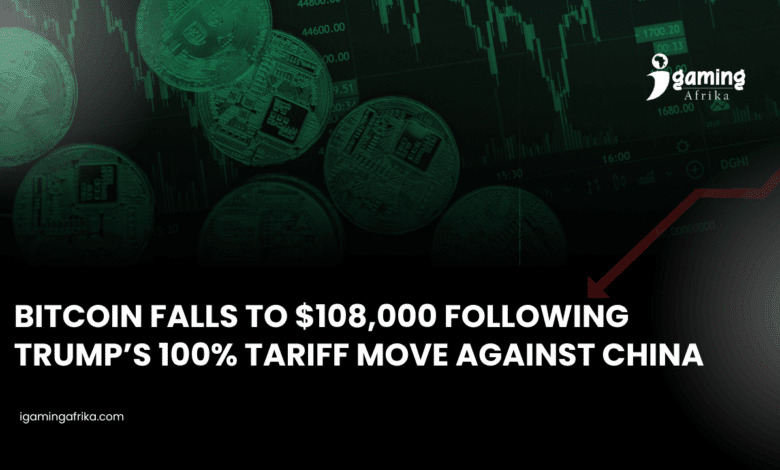
In a dramatic turn, Bitcoin’s price fell to roughly $108,000, rattling markets and triggering a wave of panic across the cryptocurrency space. The plunge coincides with escalating U.S.-China trade tensions, as President Donald Trump announced plans to impose 100% tariffs on Chinese goods and extend export controls on critical software starting November 1, 2025.
According to President Trump’s post on Truth Social, China has introduced “aggressive” export controls on nearly all product categories, effective November. In response, the U.S. will retaliate with sweeping tariffs and clampdowns on software exports. This latest salvo comes amid Beijing’s tighter restrictions on rare earth minerals inputs crucial to semiconductors, AI, defense, and high-end electronics.
The S&P 500 dropped about 2%, while the Nasdaq fell 2.7%. Crypto-adjacent stocks like Circle (CRCL), Coinbase (COIN), MicroStrategy (MSTR) and Robinhood (HOOD) shed 3-12%. Meanwhile, the investors became more cautious as fears grew about supply chain disruptions, rising inflation, and possible Chinese retaliation.
Read Also: Crypto Bill Passed by Kenya’s Parliament, Awaits Presidential Assent
Earlier in the day, Bitcoin was trading close to $117,000, continuing its strong run from recent weeks. But after the tariff news, the price dropped nearly 10% within hours, hitting $108,000. It has since recovered slightly and is now hovering around $113,000.
Analysts say several factors fueled the drop:
- Massive liquidations: Around $19 billion worth of crypto positions were automatically sold as prices fell.
- Market de-risking: Investors pulled out of risky assets like crypto to avoid further losses.
- Technical triggers: When Bitcoin broke key price levels, automated sell orders kicked in, speeding up the fall.
Despite the sharp decline, some market data suggests that Bitcoin’s current level could be a temporary bottom. Historical on-chain indicators point to this price range as a potential “good buy” zone, while many short-term investors have already exited their positions, reducing selling pressure. In addition, chart patterns are beginning to show signs of a possible rebound, hinting that the market may be preparing for a recovery. However, analysts warn that if Bitcoin falls below $108,000, the next support level could be near $103,000.
This sell-off underscores how deeply global politics now influence both financial and crypto markets. The coming weeks will be critical as investors watch several key developments including whether China retaliates with its own tariffs or export restrictions, and if the U.S. follows through on the 100% tariff plan or seeks a compromise. Economic indicators such as inflation rates, interest rate decisions, and Federal Reserve policy will also shape market sentiment, while ongoing inflows into Bitcoin ETFs could play a stabilizing role amid the volatility.



















